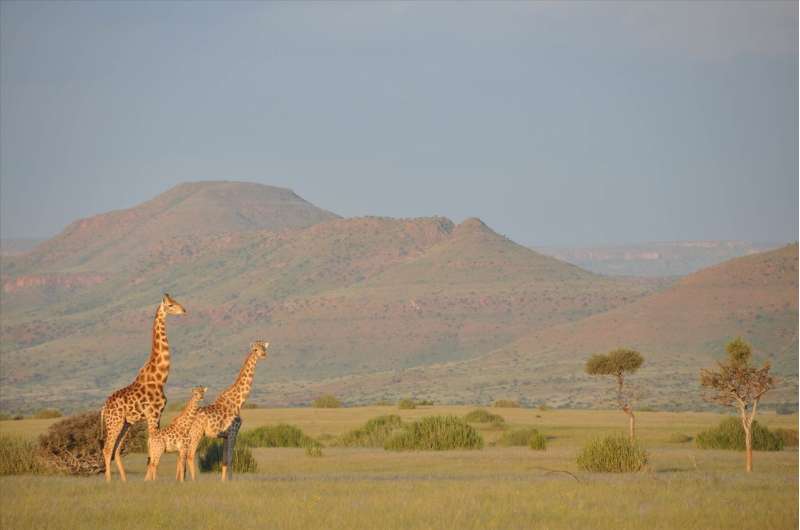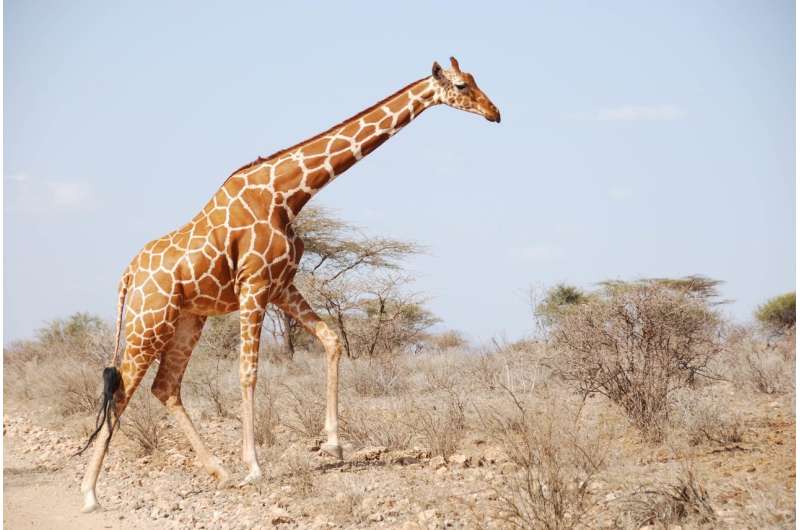Giraffes: Equals stick together

In 2016, virtually overnight, one giraffe species turned into four. Using new, even more extensive genetic tests, Senckenberg scientists have now been able to show that the four giraffe populations identified as separate species practically never interbreed, even where they occur in close vicinity to each other. The negligible number of hybrids serves as additional evidence that the Southern, Masai, Reticulated, and Northern Giraffes in fact constitute four separate species, according to the team's study, published as the title story in the recent edition of Ecology and Evolution. Conservation measures in accordance with these findings are therefore urgently needed.
In 2016, the headline read, "From one to four": Their genome revealed that the Southern, Masai, Reticulated, and Northern Giraffes clearly do not constitute one single species, as documented by a team from the Senckenberg Biodiversity and Climate Research Center and the Giraffe Conservation Foundation. However, the issue has not yet been fully settled, since experts disagree just how many different giraffe species should be recognized, and therefore protected. To shed additional light on this question, the researchers from Frankfurt conducted detailed studies to find out just how frequently the four giraffe species interbreed.
In the process, they analyzed 21 sections each from the genome of 137 giraffes from all across Africa to trace the exchange of genes among them. The result: "On average, there is at most one giraffe in every five generations whose parents belonged to two different species. Only Northern and Reticulated Giraffes interbreed a little more frequently, but still at a rate of less than one case per generation in the entire population," explains Sven Winter of the Senckenberg Biodiversity and Climate Research Center.

The decisive factor is the number of hybrids per generation. If there is more than one hybrid (mixed offspring) per generation, the scientists postulate a single species that simply split into separate populations. This is based on the biological species concept, which assumes that two separate species never, or only very rarely, interbreed. "The new study supports our results from 2016. While the four giraffe species identified by us resemble each other rather closely, they show the same genetic differences as Polar Bears and Brown Bears – two separate species that occasionally hybridize with each other," says the study's lead author, Dr. Axel Janke of the Senckenberg Biodiversity and Climate Research Center.
At any rate, distance is not the limiting factor that prevents interbreeding among the four giraffe species. "Masai, Reticulated, and Northern Giraffes all occur in East Africa in adjacent regions; yet they almost never interbreed. This is additional evidence of the fact that they are independent species. It is possible that the giraffes' reproduction depends on the rainy season, whose timing differs from one habitat to another," explains Winter. To gain deeper insight into the resulting extremely rare occurrence of hybrids, the team plans to conduct a further study in conjunction with the Kenya Wildlife Service in the near future.
The International Union for Conservation of Nature (IUCN) still considers all giraffes to be a single species. Due to the relatively large number of individuals resulting from this treatment, the giraffe is only classified as "endangered" on the Red List – the lowest risk category. However, the number of individuals in each of the separate species, and the Northern Giraffe, in particular, gives much greater reason for concern. "Our new study serves as additional proof that there are actually four giraffe species. It would be desirable if this fact were reflected in the evaluation by the IUCN to ensure that each of the species receives an appropriate level of protection," adds Winter in closing.
More information: Sven Winter et al. Limited introgression supports division of giraffe into four species, Ecology and Evolution (2018). DOI: 10.1002/ece3.4490
Journal information: Ecology and Evolution


















